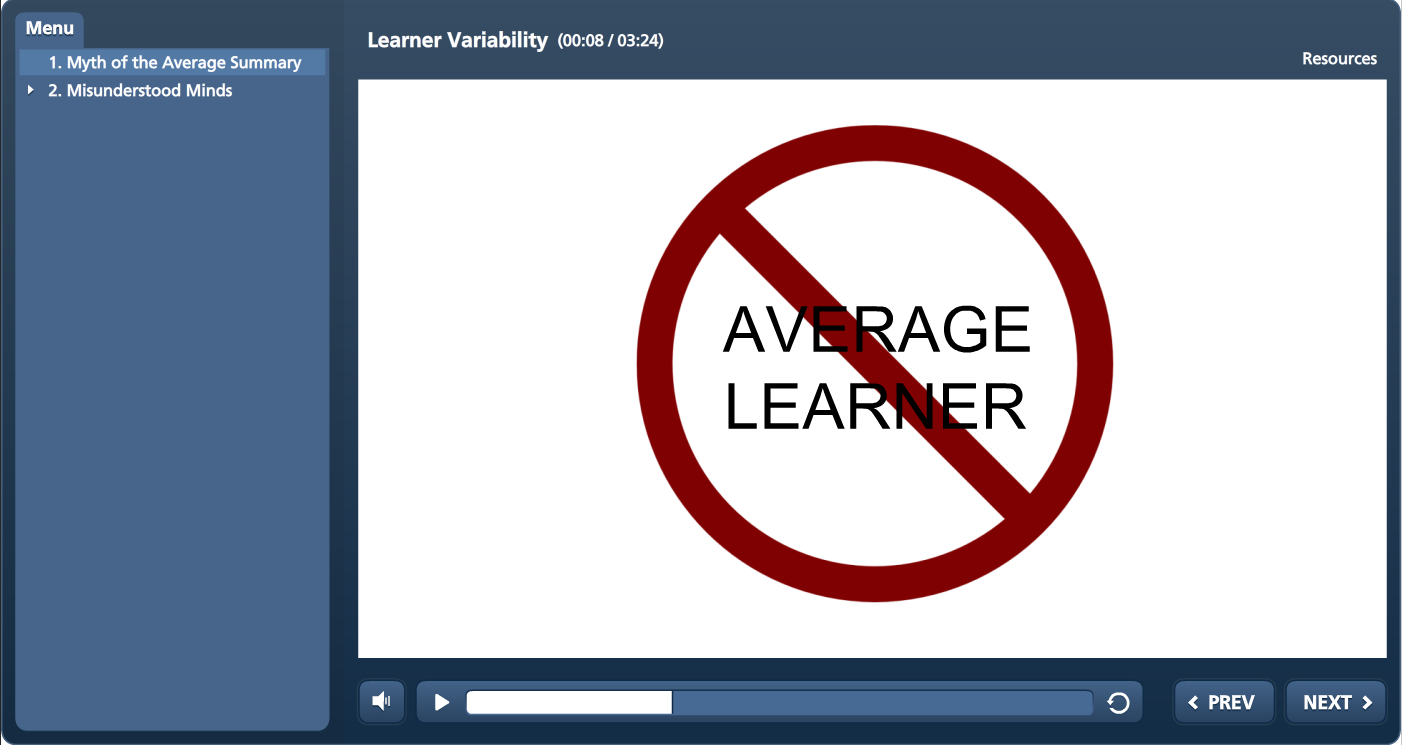4.2 Recognizing Learner Diversity
| Site: | Alma |
| Course: | TRIG Course- Alma College Winter 2015 |
| Book: | 4.2 Recognizing Learner Diversity |
| Printed by: | Guest user |
| Date: | Saturday, December 13, 2025, 12:03 AM |
1. Introduction: Diverse Learners
 Classrooms are made up of students with diverse learning needs. All students have varying interests, perceptions, learning strengths, language abilities, and motivations to learn. For some students, this variability is more significant and they struggle with traditional instructional methods and materials. In this section, you will gain insight into the variability of all students' learning needs and the needs of those students who fall into the learning margins.
Classrooms are made up of students with diverse learning needs. All students have varying interests, perceptions, learning strengths, language abilities, and motivations to learn. For some students, this variability is more significant and they struggle with traditional instructional methods and materials. In this section, you will gain insight into the variability of all students' learning needs and the needs of those students who fall into the learning margins.
To listen to this introduction, click the audio link below.

Goals:
- Recognize and respect learner diversity.
- Understand the need to proactively design instructional opportunities to eliminate barriers and include curriculum enablers that support students in the margins.
Objectives:
- Describe of the concept of learning variability and its impact on designing and implementing successful learning opportunities.
- Make connections between student's varying learning needs and proactive lesson design.
Considerations: While learning in this module, keep the following in mind
- How can we recognize learner diversity in our classrooms?
- Why should we plan for learner diversity in our classrooms?
- How can we deliver effective instruction to this diverse groups of students?
2. Think: About Diverse Learners
Watch the TedTalk video of Todd Rose explaining: The Myth of the Average.
While viewing, consider:
- How does planning instruction to meet the needs of the "average" student result in meeting the needs of no one.
- How can adding flexible technology into instructional practices improve the learning outcomes for students with a varied learning profile?
- How can you adjust instruction in your classroom to increase learning success for more of your students?
3. Learn: About Diverse Learners
In order to respond to learner variability, it's helpful to learn more about students in the margins. Often, students who learn differently struggle when asked to learn from traditional instructional methods and materials. In this section you will have an opportunity to experience learning differences first hand and listen to student voices sharing their experience participating in traditional learning activities.
Click the image below to launch the Learner Variability module. The module will open in a separate window. Close the window when completed to return to this page to continue with the lesson reflection.
Reflect:
When you complete the Learn section, move on to the 4.2.1 Learner Diversity Reflection Forum to respond to these prompts. Please answer question 1 and either question 2 or 3:
- Describe the feelings you experienced while participating in the interactive activities. How do think they relate to what students with learning difficulties may be experiencing when confronted with traditional learning methods and materials?
- Describe a recent assignment or activity you asked students to participate in that may have been difficult for students at the edges? Can you think of a way to adapt that activity to reduce the learning barriers?
OR - Describe an assignment or activity you asked to students to participate in that met the needs of a variety of learners. How do you address variability in the assignment?
4. Do: Plan for Diverse Learners in Your Class
In this section, you have an opportunity to put your new knowledge into practice.
- Think about the students in your class.
- Select a student who has been struggling with assignments or lessons.
- Go to your Digital Portfolio and complete the activity there in 4.2.
- Use the Diverse Learner Plan to guide you through the process of thinking about the barriers your focus student faces on a particular task, his/her strengths and weakness related to the task and some potential enablers you could integrate into the assignment the next time you present it to your class.
If you need additional support to complete this assignment, use the articles and websites posted in the next chapter of this lesson.
5. Resources: Diverse Learners
Resources To Learn More About Diverse Students
***THIS SECTION IS OPTIONAL. This is a list of resources that may be beneficial to you or your school team. Feel free to browse! The following resources were gathered from a variety of sources. To access the information, click on the highlighted link.
-
Difficulty Reading and Writing This link from Misunderstood Minds, shares information about what difficulties students may have with written production. This link shares information on effective instruction for students with reading difficulties.
-
Difficulty Seeing Begin at an early age to support students with visual difficulties. Additionally, this link provides good information from American Federation for the Blind
-
English Language Learners This article explains the diversity of English Language Learners
-
Sensory Difficulties Students with sensory processing disorders e
 xperience disorganization which impacts learning.
xperience disorganization which impacts learning. -
Difficulty Paying Attention Misunderstood Minds presents a summary and activities around attention difficulties here.
-
Difficulty Communicating Modeling communication strategies for students with communication challenges is integral to the child learning to communicate. This link provides a good introduction to augmented communication.
-
Physical Difficulties Strategies to support students with physical difficulties in the classroom.
-
Cognitive Difficulties Students with cognitive difficulties vary in the ways they learn best. This article describes effective teaching strategies for students with cognitive impairments.
- The Myth of Learning Styles; Education Week article
10. The following two resources discuss diverse learners and include some strategies to support students.
http://www.engageny.org/sites/default/files/resource/attachments/diverselearners_pd_handouts.pdf
You are now ready to move on to: 4.3 Universal Design For Learning
